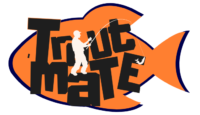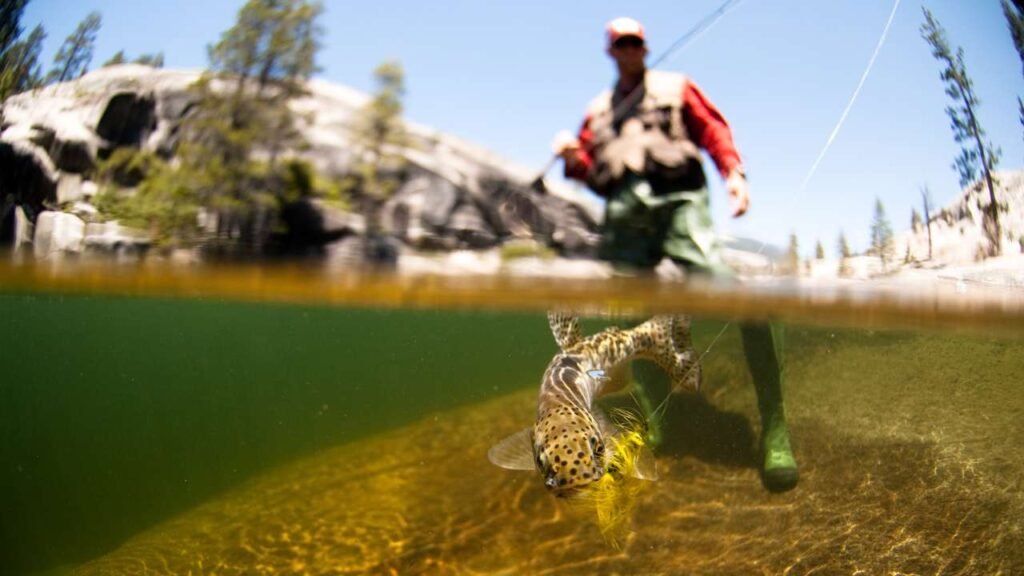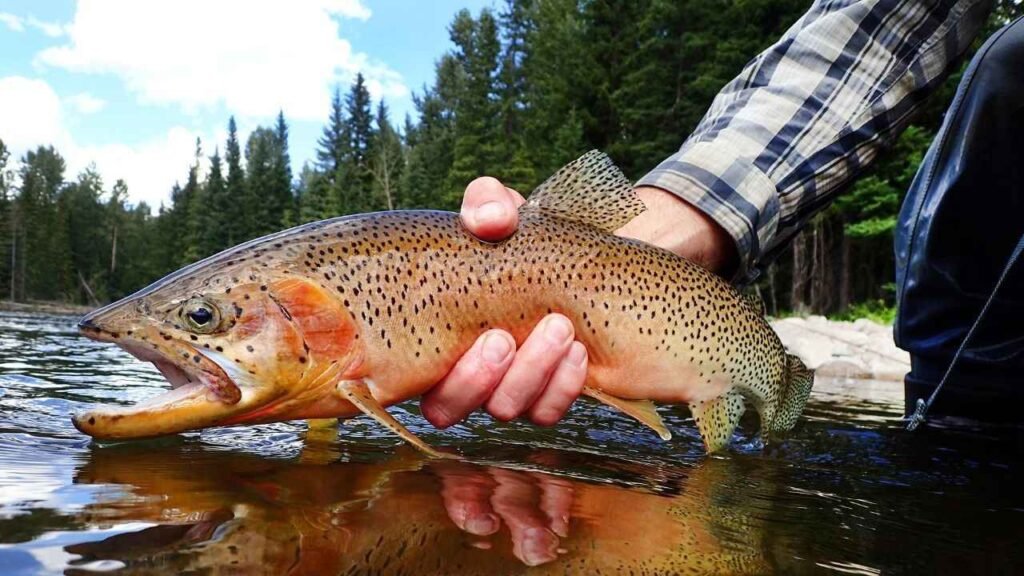You might struggle to catch trout fly fishing due to improper technique or using the wrong flies. Location and timing also play crucial roles.
Fly fishing for trout requires skill, patience, and knowledge. Many beginners face challenges due to incorrect casting techniques or choosing unsuitable flies. Trout are selective, often responding only to specific insects or bait that closely mimic their natural food sources.
Understanding the trout’s habitat, feeding patterns, and the best times to fish can significantly improve your chances. Experienced anglers often find success by adapting their strategies based on weather, water conditions, and trout behavior. By honing your skills and learning from each outing, you can increase your chances of a successful catch.
Common Mistakes
Many anglers struggle with catching trout while fly fishing. They often make common mistakes that hinder their success. Understanding these mistakes can greatly improve your chances of catching trout.
Wrong Fly Selection
Choosing the wrong fly is a frequent mistake. Trout are picky eaters and may ignore the wrong fly. Here are some tips to select the right fly:
-
Match the Hatch: Use flies that mimic local insects.
-
Size Matters: Ensure the fly is the correct size for the trout.
-
Color Counts: Match the color of the fly to the natural insects.
Use a fly selection chart to help you choose the right fly. Always carry a variety of flies to adapt to changing conditions.
|
Condition |
Recommended Fly |
|---|---|
|
Clear Water |
Small, natural-colored flies |
|
Muddy Water |
Bright, larger flies |
Poor Casting Technique
Poor casting technique is another common mistake. Good casting is crucial for successful fly fishing. Here are some essential tips:
-
Practice Your Cast: Spend time practicing your casting technique.
-
Use Proper Form: Keep your wrist straight and use your arm.
-
Watch Your Backcast: Ensure your backcast is high and straight.
Also, consider the wind and water conditions. Adjust your cast accordingly to avoid spooking the trout. Remember, practice makes perfect. Improve your casting skills to increase your chances of catching trout.

Credit: www.ginkandgasoline.com
Choosing The Right Gear
Choosing the right gear is crucial for successful trout fly fishing. The correct equipment can make a significant difference between a fruitful fishing trip and a frustrating one. Let’s delve into the essentials of rod and reel selection, as well as the importance of fly line and leader.
Rod And Reel Selection
Selecting the right rod and reel is the first step to successful trout fly fishing. Ensure your rod matches the type of water you are fishing in.
-
Small Streams: Opt for a 7-8 foot rod.
-
Larger Rivers: Use a 9-10 foot rod.
The weight of the rod also matters. For trout, a 4-6 weight rod is ideal. Pair your rod with a reel that matches its weight. A balanced setup ensures smooth casting and better control.
Fly Line And Leader
Your fly line and leader are just as important as your rod and reel. The fly line should match the weight of your rod for optimal performance.
Consider these types of fly lines:
-
Floating Line: Best for most trout fishing scenarios.
-
Sinking Line: Useful for deeper waters.
The leader should taper from thick to thin. This helps in presenting the fly naturally. A 9-foot leader is standard for trout fishing. For clearer waters, extend your leader to 12 feet.
Use a tippet to connect your fly to the leader. Choose a tippet size based on the fly size. Smaller flies need finer tippets.
Understanding Trout Behavior
Struggling to catch trout while fly fishing can be frustrating. To improve your chances, it’s essential to understand trout behavior. Knowing their feeding patterns and preferred habitats can make a big difference in your success rate.
Feeding Patterns
Trout have specific feeding patterns that vary throughout the day. They feed most actively during early morning and late evening. During these times, the water temperature is cooler, and insects are more active.
Trout primarily feed on insects, small fish, and crustaceans. They often focus on insects like mayflies, caddisflies, and stoneflies. Knowing which insects are present in the water can help you choose the right fly.
Trout also have seasonal feeding habits. In spring and fall, they are more active and feed aggressively to prepare for spawning or to recover afterward. In summer, they may feed less during the hot midday hours and more during the cooler parts of the day.
Preferred Habitats
Trout prefer specific habitats that provide the right conditions for feeding and shelter. Clear, cold, and well-oxygenated water is ideal for trout. They often inhabit streams, rivers, and lakes with plenty of cover.
Trout seek out areas with structure, such as rocks, logs, and vegetation. These structures provide hiding spots and protection from predators. They also create eddies and currents that bring food to the trout.
In rivers and streams, trout often stay in riffles, pools, and runs. Riffles are shallow sections with fast-moving water, which bring plenty of oxygen and food. Pools are deeper areas where trout can rest and hide. Runs are the sections between riffles and pools, offering a mix of both environments.
Understanding these habitats can help you target the right areas and increase your chances of catching trout.
Perfecting Your Presentation
Struggling to catch trout fly fishing? Perfecting your presentation may be the key. Trout are smart and can sense poor presentations. A proper presentation can make a huge difference.
Fly Placement
Fly placement is crucial. Always place your fly gently on the water. Avoid making a splash. Trout can be easily spooked by sudden movements. Aim for a natural presentation.
Consider using the reach cast technique. This can help you place the fly correctly. Practice makes perfect. Spend time mastering your casting skills.
|
Technique |
Benefits |
|---|---|
|
Reach Cast |
Improves fly placement |
|
Roll Cast |
Reduces water disturbance |
Drift Control
Controlling the drift is also vital. Your fly should float naturally with the current. Any unnatural movement can alert the trout.
Use mending to manage your line on the water. This helps in creating a natural drift. Lift your rod tip to reduce drag. Keeping your line off the water can also help.
-
Use an upstream mend for a drag-free drift.
-
Lift the rod tip to control the line.
-
Practice different mending techniques.
Reading The Water
Understanding the water is crucial for successful trout fly fishing. Reading the water helps you find where trout hide and feed. This skill can significantly boost your catch rate.
Identifying Hot Spots
Trout prefer specific areas in a stream or river. Look for places where the water speeds up. These are often around rocks or logs.
Focus on deep pools and undercut banks. These spots offer trout shelter and food. Another key area is where fast water meets slow water. Trout often stay in these transition zones.
Water Flow And Temperature
Water flow affects where trout will be. Fast-moving water carries more oxygen. Trout need oxygen-rich water to thrive.
Temperature also plays a big role. Trout prefer cooler water, usually between 50-60°F (10-15°C). Warmer water holds less oxygen, making it less attractive to trout.
Use a thermometer to check water temperature. If the water is too warm, try fishing in deeper, cooler sections of the stream.
Understanding these elements will help you find the best spots for trout fly fishing.
Timing Your Fishing
Catching trout while fly fishing requires perfect timing. Understanding the best times to fish can make a big difference. This section will help you learn when to fish for trout effectively. Focus on seasonal changes and optimal fishing times.
Seasonal Changes
Trout behavior changes with the seasons. In spring, trout are active and feed often. Warmer water temperatures in summer make trout seek cooler, deeper areas.
Fall is another active season for trout, as they prepare for winter. In winter, trout slow down and stay in deeper waters. Understanding these seasonal patterns helps you plan your fishing trips better.
Optimal Fishing Times
Knowing the best times of day to fish is crucial. Early morning and late afternoon are prime times. Trout feed actively during these cooler periods.
Midday fishing can be less productive, especially in summer. Shadows and cooler water temperatures attract trout. Sunrise and sunset are your best bets for successful fishing.
|
Season |
Best Fishing Time |
Water Temperature |
|---|---|---|
|
Spring |
Early Morning |
50-60°F |
|
Summer |
Late Evening |
60-70°F |
|
Fall |
Late Afternoon |
50-60°F |
|
Winter |
Midday |
40-50°F |
Always check the weather forecast before planning your trip. Windy or rainy days can affect trout feeding. Clear, calm days are usually best.
Adapting To Conditions
Adapting to conditions is key to fly fishing success. Understanding weather changes, water clarity, and other factors can boost your catch rate. By adjusting your tactics, you can better match the trout’s behavior and increase your chances of landing that prized fish.
Weather Changes
Weather plays a crucial role in trout behavior. Sudden shifts in temperature, wind, or light can influence their feeding habits. Cloudy days often see more active trout, as the reduced light makes them feel safer. On sunny days, fish may hide under cover or move to deeper waters.
-
Wind can stir up insects, making surface flies more attractive.
-
Rain can wash food into the water, increasing feeding activity.
-
Temperature drops might make trout sluggish and less likely to bite.
Water Clarity
Water clarity affects trout’s visibility and feeding behavior. Clear water means trout can see your fly from a distance. This makes presentation and fly selection crucial. In murky water, trout rely more on their lateral line to detect prey.
|
Water Clarity |
Recommended Fly |
|---|---|
|
Clear Water |
Small, natural-colored flies |
|
Murky Water |
Bright, larger flies |
Adjusting your approach based on water clarity can greatly enhance your chances of catching trout. Use the right fly and technique for the best results.

Credit: troutbitten.com
Learning From Experts
Learning from experts can transform your fly fishing experience. Expert guidance can help you understand techniques and strategies to catch trout. Let’s explore two ways to learn from experts: guided trips and fishing communities.
Guided Trips
Guided trips offer hands-on learning with seasoned professionals. These experts share their knowledge about the best fishing spots and techniques. They can teach you how to read the water and understand trout behavior.
On a guided trip, you will get personalized tips tailored to your skill level. This one-on-one attention can help you improve quickly. Many guides also provide the necessary gear, making it easier for beginners.
Consider booking a guided trip during different seasons. This way, you will learn how trout fishing changes throughout the year. You will also discover how to adapt your strategies to seasonal conditions.
Fishing Communities
Joining fishing communities can provide a wealth of knowledge and support. These groups often include both experienced anglers and beginners. They share tips, stories, and advice on various fishing techniques.
Engage with these communities through forums, social media groups, or local clubs. You can ask questions, share your experiences, and learn from others. Many communities also organize events and meetups, offering more opportunities to learn.
Participating in fishing communities helps you stay updated on the latest trends. You can learn about new equipment, best practices, and local fishing conditions. This collective knowledge can significantly enhance your fly fishing skills.
Mastering trout fly fishing takes patience and practice. Focus on improving your techniques, understanding trout behavior, and selecting the right gear. Remember, even experienced anglers face challenges. Stay persistent, learn from each outing, and enjoy the journey. With dedication, you’ll soon see improvements and start catching more trout.
FAQs:
Why Can’t I Catch Trout On The Fly?
You might not be using the right fly or technique. Ensure proper presentation and match the hatch. Check local conditions and adjust accordingly.
Why Is It So Hard To Catch Trout?
Trout are hard to catch due to their keen senses and wariness. They often inhabit fast-moving, clear waters, making them elusive.
How To Catch More Trout Fly Fishing?
Use the right fly patterns for the season. Cast accurately to feeding trout. Fish during active periods like early morning or late evening. Use stealthy approaches to avoid spooking fish. Adjust your techniques based on water conditions.
Why Can’t You Catch-and-release Trout?
Catch-and-release can harm trout. Stress, injury, or improper handling might cause death. Follow local regulations to protect fish populations.



